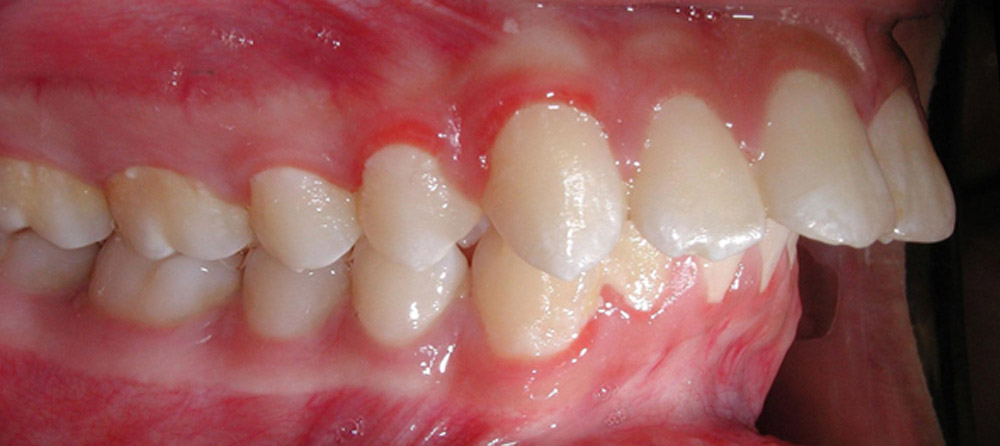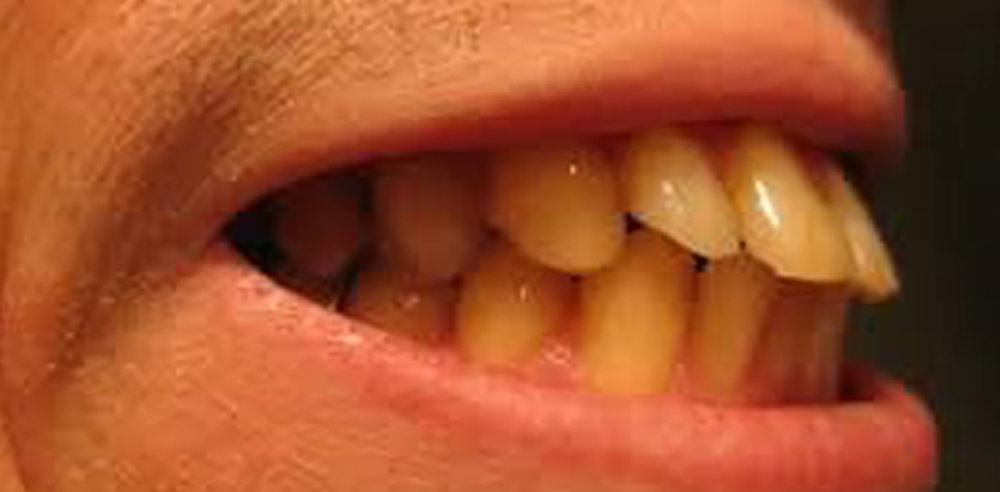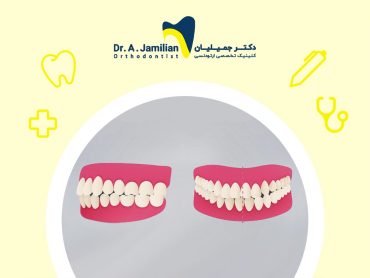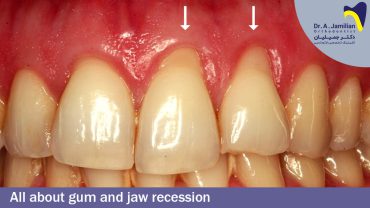Prominent teeth or dental protrusion may negatively affect speech and facial profile. It can additionally cause aesthetic problems and reduce the patient’s self-confidence. The main concern of patients with dental protrusion is often the improvement of their facial beauty.
A dental protrusion or prominent teeth occurs when the upper front teeth protrude outward, cannot extend over the lower teeth, and are not placed in their normal position. This condition may occur when teeth are either well-positioned or malpositioned.

Causes of prominent teeth
According to the literature, most prominent teeth or protrusion cases are caused by bony and dental abnormalities. In cases where the upper or the lower teeth protrude, the orthodontist may attribute it to one or more of the following three causes:
• One of the jaws is abnormally forward or backward.
• Jaws are in their natural positions, but teeth are slightly forward.
• There is not enough space on the dental arch for the eruption and growth of teeth. As a result, teeth may push each other and move forward. This condition, also known as crowded teeth, can be treated by fixed or removable orthodontics.
The normal range for the upper teeth to extend over the lower teeth is 2-5 mm. The dental protrusion can be easily noticed when the extension exceeds 5 mm.
Do daily bad habits cause prominent teeth?
It is noteworthy that daily habits can significantly involve developing a dental protrusion; if people do not break such habits, they can exacerbate a prominent tooth or protrusion. Thumb sucking is among the worst habits that can exacerbate this condition. Children who suck a pacifier or a finger are more likely to develop prominent teeth.
Treatment of prominent teeth
The treatment of dental protrusion can be a big deal for patients giving all types of wrong images and methods, but not for a qualified orthodontist. An experienced orthodontist will offer very creative and innovative ways to treat various malocclusions. These include dental prominent teeth or protrusions. However, some of these treatments may be time-consuming in some cases. It is noteworthy that the treatment is planned based on the position of teeth and jaws and the type of malocclusions.

The orthodontist chooses the best treatment after examining the oral cavity and diagnosing the cause of dental protrusion. For example, when crowded teeth are the leading cause of prominent teeth, the orthodontist may apply the orthodontic procedures commonly used to treat crowded teeth to correct the dental protrusion. These treatments may include either fixed or removable orthodontics.
In some cases, the orthodontist may extract some teeth taking into account the principles of tooth extraction. Suppose maxillomandibular abnormalities cause dental prominent teeth in a patient within the growth period. In that case, the orthodontist does their best to correct the maxillomandibular abnormality by using a simple intraoral removable orthodontic appliance to return the protruded teeth to their original position. In adults, maxillomandibular abnormalities commonly are treated by a surgical procedure. When the only problem causing a dental protrusion is the dental angle, a fixed orthodontic appliance’s brackets can place teeth in their normal position at the right angle.
As said previously, various procedures can treat such malocclusions. However, in more complicated cases where the patient cannot bring their lips together, the dentist may have to extract some permanent teeth to achieve the desired result, reduce the pressure applied to lips and make it possible for the patient to easily bring their lips together.
Orthodontic treatment of prominent teeth
Orthodontists can take advantage of fixed orthodontics or removable orthodontics for the treatment of such malocclusions. Orthodontic treatments can significantly help to move the jaws and pull back teeth within a certain period. In some cases, a surgical procedure may be required to correct the maxillomandibular abnormalities to achieve the best therapeutic results.


